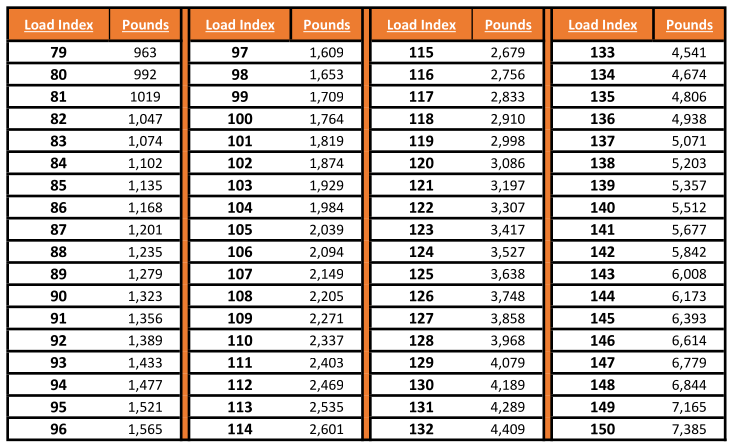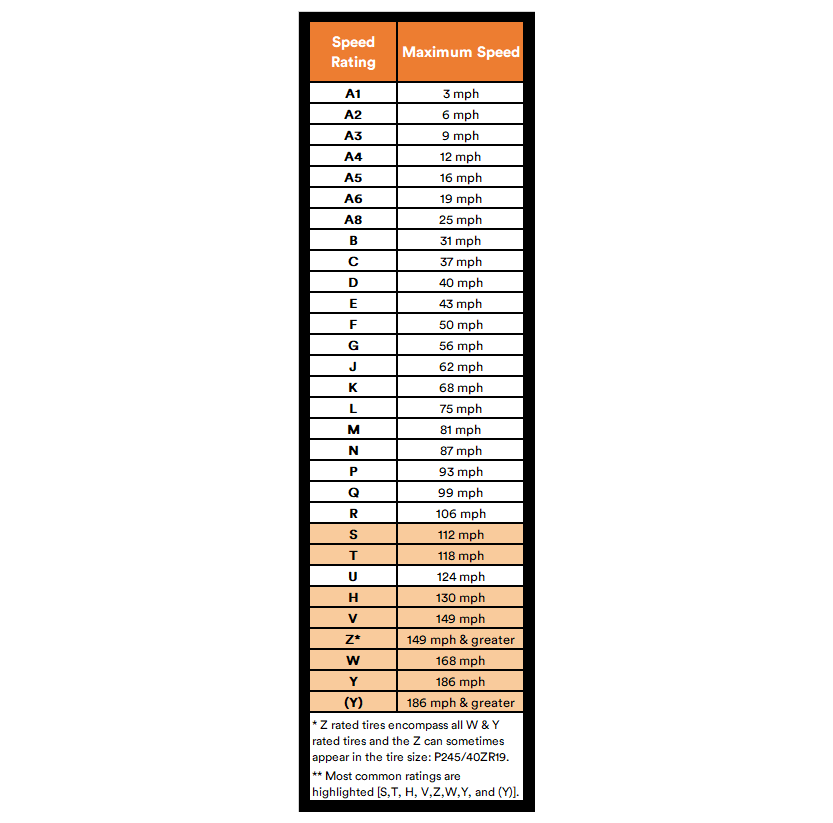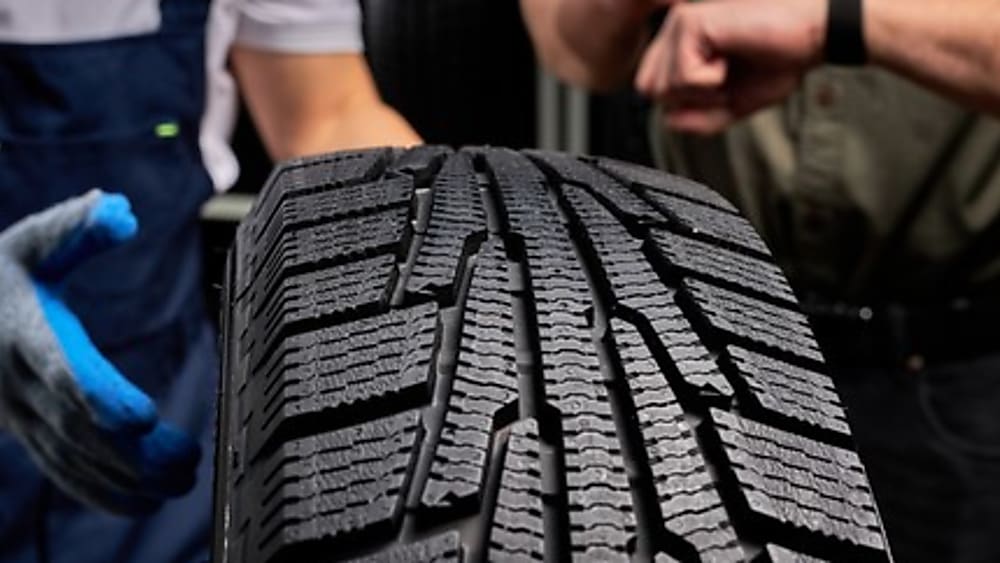Tire Buying Guides
Best price guarantee
Tire replacement coverage
24/7 roadside assistance
Easy returns
Not all tires are the same. But what separates one tire from another? Naturally, your mind immediately goes to the tread pattern, and for a good reason. The tread pattern defines what terrain a tire is capable of handling.
You know that because what's found on an off-road truck is very different from what's on a race car, and the tires on your commuter land somewhere in between. The next thing you'll likely think about is the rubber compounds used. The compound a tire is made of plays a big role in how a tire handles certain elements and plays hand in hand with the tread to determine what conditions the tire can safely tackle.
It sounds to us like you already know quite a bit about tires. What if we told you these factors still aren't all that separates one tire from another?
Thankfully, all of our answers are stamped on each tire. No, we're not talking about the size. We're talking about the tire service description. This simple little stamping can tell us quite a bit about a tire, and we're here to tell you what it means about the capabilities of your tires.
What is a tire service description?
A tire service description is a standardized number that's stamped into the tire right next to the size. Something like 102H is typical. That single, 4-digit code tells us two things. The first part of that, 102, is the load index, while the H is a speed rating.
Believe it or not, that number immediately tells you exactly what a tire is capable of and how it stacks up against other options. That combined with the size, compound, and tread pattern come together to define the overall performance of your tires.
What does tire load index mean?
Let’s begin with the bigger part of that number, the load index. Hang on, performance junkies, we'll fill you in on speed rating in a moment.
The load index is essentially the amount of weight that your tire can support. Again, this is a standardized number, so the 102 in our example translates to another weight capacity. In this case, it tells us the tire can support up to 1,874 pounds when fully inflated.

However, 102 is just one of the many different possible weight ratings of your tire. The standardized ratings start at 79 and run to 150, with correlating weight ratings of 963 to 7,385 lbs. The higher your load index number, the more weight the tire can support.
So, you’re now scratching your head and thinking, "my SUV definitely weighs more than 1,874 pounds." That's true. Your SUV probably weighs around 5,000 pounds or more. Not every tire needs to support that kind of weight, though. That weight is distributed across all four tires. Also, the total weight that a set of tires can support is based on a multiple of each tire's load rating.
Since we're talking about a standard vehicle, you have four tires. Therefore, our example tires can collectively support up to 7,496 pounds. That's more than enough for you, your passengers, and some sports equipment.
Load index is an important detail to pay attention to with SUVs and trucks because overloading them can cause the tire to blow out suddenly. For example, let’s say you have a 5,000-pound pickup truck with our example tire on it. Well, the tires can support the truck, but what about a 2,500-pound payload? You're asking for trouble.
Don't worry. You don't necessarily have to familiarize yourself with the standardized numbers. Some tires have the max weight capacity stamped on the side of the tire, near the wheel. That can save you a lot of time when deciding what tire you need to haul the goods.
What does tire speed rating mean?
If you have a need for speed, the speed rating is a massive number to you. Well, it is important for everyone. That's because the speed rating is a number that describes the maximum top speed capabilities of a tire. In other words, it says what speed the tire would be good for.
We get it. We're just as bummed out as you because the speed rating is defined by a standardized series of letters rather than having the rating stamped on the side of a tire.

So while it would be cool to see 186 mph cast in the tire's sidewall, we'll have to settle for the (Y) instead. Probably for the better, though, because something like a wimpy 118 mph is a lot more of a buzzkill than the letter H covering our shame.
While we're cracking jokes, you're busy learning. The wheels are turning, and you're starting to see that the alphabetical code is easy to follow—the later the letter in the alphabet, the higher the speed rating. You're correct, but you're also dead wrong.
Well, you are mostly correct. Most of the standardized speeds do increase with an alphabetical order sequence. However, the letters S, H, V, and Z are all out of series. Why?
Speed ratings were introduced in the 1960s. When they were, S, H, and V were the only three on the chart. Z was then added in and was thought to be the highest speed rating a tire would ever need.
Over the years, other speed ratings were later trickled in in alphabetical order. Since folks were already accustomed to the existing ratings for S, H, V, and Z, they were left untouched, creating some disorder. Of course, Z was surpassed, which is why Y comes next on standard charts.
We are here to help
Unfortunately, you aren't usually given a cheat sheet like you are with load ratings. You will need to familiarize yourself with the correlating speed rating to the alphabetical character on your tire and stick with it— you won't find the actual speed rating stamped anywhere on the tire.
Exceeding speed ratings can be very dangerous. Now, you might have pushed your H tires beyond 118 miles per hour and were just fine. Well, a tire may handle speeds beyond its threshold for short bursts. However, centrifugal force can pose a significant issue to the tire’s structure if those speeds are sustained for a prolonged period.
So, what is a tire service description? In short, it tells you what kind of abuse your tires can take. The first part of the number is your load index, and the alphabetical number that follows is the speed rating. Make no mistake. These are crucial details.
Overlooking these definitive characteristics and pushing your tire beyond its abilities can lead to catastrophic results. You need to make sure you understand the task you need to perform and pick a set of tires that match.
If you're still unsure about tire service descriptions or need help picking out a set of tires that can stand up to the task at hand, give us a call.

Our tire pros will tell you everything you need to know and help you pick out the ultimate set of rubber. Afterward, they can even pre-book an appointment with a trusted local installer who will prep your vehicle to handle anything.
Ready to find the perfect tires?
Search By